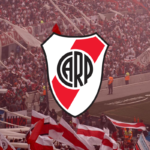


Keep hearing the words ’25 de Mayo’ or ‘9 de Julio’ in Buenos Aires? We explain the significance of these dates.
Marking Argentina’s first official steps towards nationhood, Día de Revolucíon de Mayo is now a day for locro, folklore, and decorative blue and white rosettes. This holiday celebrates the events of the days leading up to May 25, 1810, when Buenos Aires croillos (the direct descendants of Spanish immigrants) proclaimed the end of the Spanish colonial presence in the region, and commenced Argentina’s quest to form a unified federal government. Full independence was declared almost two months later on July 9th, which is celebrated as Independence Day.

Both days are two of Argentina’s most important national holidays and are the namesakes of the most quintessential streets in Buenos Aires. Avenida de Mayo runs between the Plaza de Mayo and the Plaza Congreso. Lined with sycamores, this avenue is the home of some of Buenos Aires’s best-known tourist stops. The popular Café Tortoni, the 26 Billares Bar, Palacio Barolo, and the Cabildo, which served as town hall during the colonial era and was the very site of the May Revolution, can all be found on Avenida de Mayo. Honoring the Argentine Independence Day. Avenida 9 de Julio cuts straight through the heart of downtown. With up to 7 lanes going each direction, this avenue is one of the widest in the world and the home to the Obelisco, one of Buenos Aires’ most iconic monuments.
Both holidays are celebrated with parades, concerts and lots of flag waving. While there are typically events throughout the city, the biggest demonstrations can be found at Avenida de Mayo. Complete with parades, speeches and plenty of food vendors, come Independence Day, Avenida de Mayo is the most festive place to be in Buenos Aires.

For Porteños, both of these days are spent getting together with friends or family and enjoying large quantities of traditional food and drink. In Argentina, locro is to Independence Day what hot dogs and hamburgers are to the fourth of July for Americans. Locro is a hearty stew comprised of beans, corn, squash potato, and various cuts of meat and chorizo. Filling, and deliciously warming, locro is perfect for the winter day that Independence Day falls on. For dessert, fried pastries that are filled with either custards or jams called pastelitos are on the menu. All to be washed down with copious amounts of Malbec.
For travelers who don’t have family or friends to celebrate with, head to La Peña del Colorado ( Guemes 3647) for an authentic Independence day experience. There you can enjoy an excellent locro while taking in the great atmosphere and music. In traditional peña fashion, after dinner the restaurant turns into a giant campfire with guitars and requests flying from table to table. It’s a unique experience that’s truly Argentine. After all that wine, locro and buena onda , you’ll think you know the words as well!
As they are public holidays, many shops and tourist attractions are closed or have limited hours. If your plans include anything other than celebrating Argentina’s independence, make sure to double check the hours ahead of time.
(US) 910 795 2992
(AR) +54 9 11 —- —-
©Copyright 2025 Landingpadba, LLC